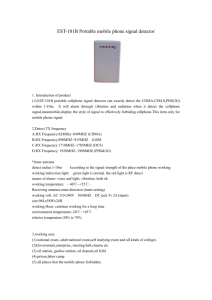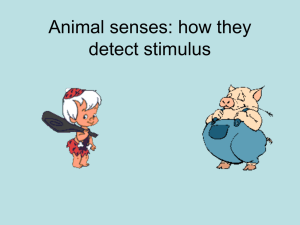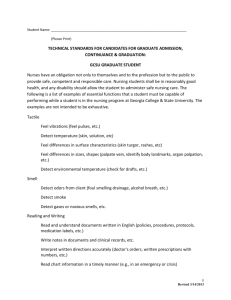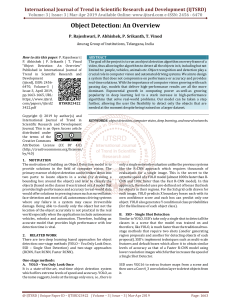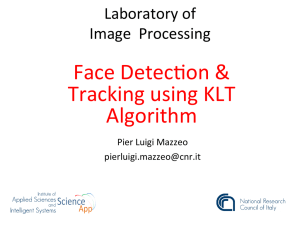Disappearing Act
advertisement
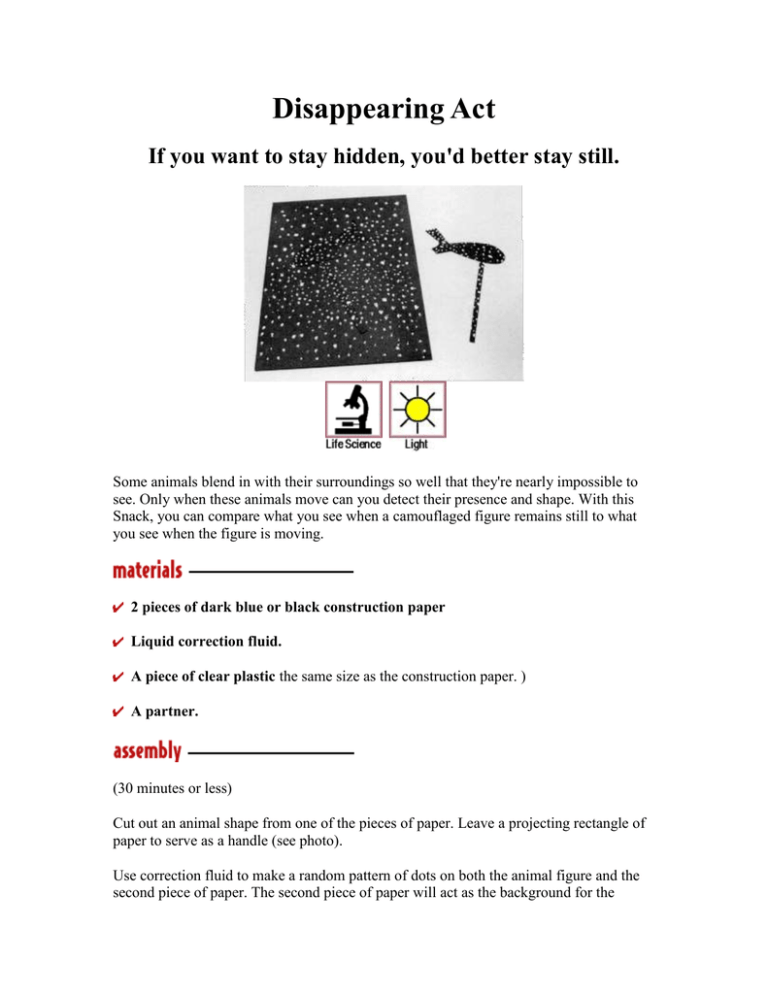
Disappearing Act If you want to stay hidden, you'd better stay still. Some animals blend in with their surroundings so well that they're nearly impossible to see. Only when these animals move can you detect their presence and shape. With this Snack, you can compare what you see when a camouflaged figure remains still to what you see when the figure is moving. 2 pieces of dark blue or black construction paper Liquid correction fluid. A piece of clear plastic the same size as the construction paper. ) A partner. (30 minutes or less) Cut out an animal shape from one of the pieces of paper. Leave a projecting rectangle of paper to serve as a handle (see photo). Use correction fluid to make a random pattern of dots on both the animal figure and the second piece of paper. The second piece of paper will act as the background for the figure. Place the figure on the background and cover both pieces of paper with the plastic. The transparent covering keeps the edges of the animal flat against the background. (5 minutes or more) View the animal cutout against the background from an arm's length away. It should be very difficult, if not impossible, to detect the shape of the animal. If you can see the edges, move about 6 feet (2 m) away and have a friend hold the animal and the background. Place the cutout so that you can use the handle to move the animal while it is under the glass or plastic. Notice that this movement makes it easy to detect the presence of the animal and to identify its shape. By making several different shapes you can make a game of this. Can anyone identify the animal before it moves? Who can identify it first when it moves? Many animals have patterns of color on their bodies that allow them to blend into the background. These animals are hard to detect when they're still. But when the animals move, you can easily pick them out. That's because humans, as well as many other animals, have specialized brain cells that detect motion. These cells receive information from the light-sensitive cells at the back of the eye. What animals can you think of that use camouflage to blend into their environment?

